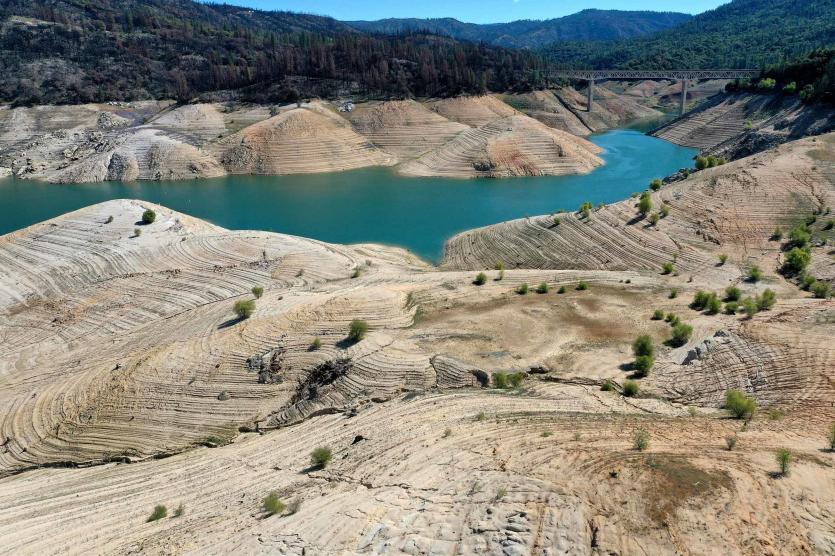Warmer temperatures are leading to emptier reservoirs across the West, such as Lake Oroville in Northern California. Photo:Getty
By Patryk Krych | The World Daily | AUGUST 17th 2021
A first-ever water shortage has been announced by officials at the biggest reservoir in all of the United States, Lake Mead. The lake hasn’t suffered any shortages since its initial creation, and the crisis has led to water cuts all across the Western states.
This is also known to be the first ever ‘tier 1’ water shortage declared by the US Bureau of Reclamation. The Lake Mead reservoir was created all the way back in the 1930s, impounding the Colorado River. It had never before experienced a shortage this low, according to officials.
“What we hoped we would never see is here,” said a deputy commissioner at the Bureau of Reclamation, Camille Calimlim Touton. “At the heart of today’s announcement is also an acknowledgment of the hardship the drought has brought.”
The water’s reserves have fallen all the way down to about 35% capacity, and it’s expected to fall further by the end of the year. The Bureau of Reclamation thus announced on Monday that further cutbacks to water may be necessary in January of 2022. Though household water supplies will be largely unaffected by this, the water prices may see a notable rise as a result.
The state hit hardest by this crisis, by far, is Arizona. It receives nearly a fifth of all its water supplies from the Colorado River, so its farming is most likely going to be affected by these changes in the coming years if they continue as projected. Particularly in Pinal county, where it’s predicated that both farmers and ranchers may see their water supply from the Colorado River drop by at least half next year.
“This is a very big deal, because there’s never been a shortage like this over the almost 100-year history,” said the director of the Kyl Centre for Water Policy at Arizona State University, Sarah Porter. “The immediate impacts of this will not probably be felt by most people. But it’s a big, giant red flag telling a region that is dependent on Colorado River water that we need to adjust to a drier future.”
Though the cutbacks are considered a crucial step, it’s unlikely that they’ll have any real effects on the reservoir’s shortage in the near future.
“I think in the next five years, what we need to do is have a reckoning over our water use,” Porter added. “We have to rethink how we use water in the western US.”






